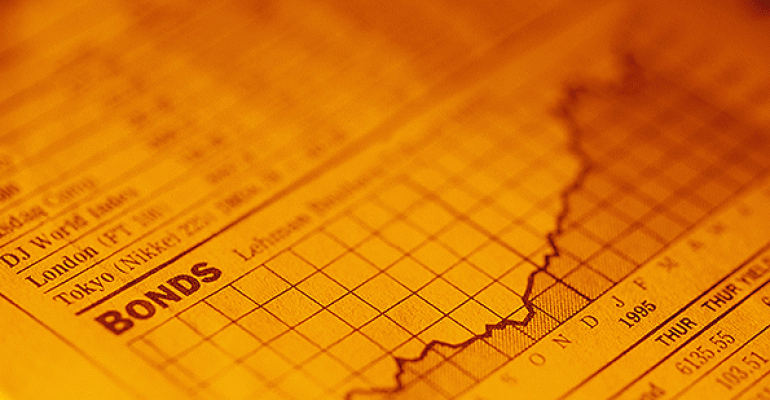By Alexandria Arnold
(Bloomberg) --The world’s most important bond market is stuck in its worst rut in more than half a century.
Ten-year U.S. Treasury yields have been locked between 2.01 percent and 2.63 percent in 2017 -- a measly 62 basis points. That’s the tightest trading range since 1965, when William McChesney Martin ran the Federal Reserve, Lyndon B. Johnson was president and Frank Herbert’s sci-fi classic Dune hit shelves. And it’s less than half the annual average span of 175 basis points, according to data compiled by Bloomberg.
Analysts who less than six months ago predicted that the 10-year yield would end the year at about 3 percent have since brought their median forecast down more than 50 basis points. Investors say yields will continue to be constrained by mediocre growth, tepid inflation and a Fed that’s revised down its estimate of the terminal fed funds rate amid a well-telegraphed tightening cycle.

"There’s a disappointment on growth and there’s a disappointment on inflation, which sort of pushes yields lower," said Lee Ferridge, head of macro strategy for North America for State Street Corp. Conversely, balance-sheet tapering from the Fed and expectations for faster economic expansion are keeping a floor underneath yields, he said.
The Fed this month unveiled plans to start shrinking its $4.5 trillion balance sheet, which strategists say may put upward pressure on yields. Ditto for the European Central Bank’s anticipated tapering of its bond-purchase program, which analysts expect an announcement on in the coming months. Still, that may not be enough for the 10-year yield to break above highs made in mid-March.
"There’s not really that much room for yields in general in the U.S. to meaningfully rise, and at this point it’s going to depend on what happens with removal of accommodation globally and in the U.S.," said Subadra Rajappa, head of U.S. rates strategy at Societe Generale. She expects 10-year Treasury yields to end the year near 2.5 percent, saying "25 basis points from here is basically as high as we get, if that."

Beyond issues related to the bond holdings of the ECB and Fed, U.S. policymakers are still signaling a rate hike at the central bank’s December meeting, which could prompt year-end volatility. And President Donald Trump is seeking to pass a tax overhaul which, if successful, could revive expectations for stronger growth and inflation. On the flip side, any escalation in geopolitical tensions or other exogenous shocks risk sending investors fleeing to haven assets and forcing yields lower.
Bank of America Corp. is looking to the possibility of action on the political front to help drive yields higher. Mark Cabana, the firm’s head of U.S. rates strategy, has one of the highest year-end forecasts for 10-year yields at 2.85 percent. That compares to a median estimate of 2.48 percent, according to the estimate of 62 analysts and strategists surveyed by Bloomberg -- well within the year’s range.
"In order to get rates to move materially higher, we’re going to need to see something happen out of Washington,” Cabana said. “In the case that we do, term premiums should rise not only due to potential expectations for r-star moving higher,” he said, referring to the inflation-adjusted neutral policy rate, “but also due to the fact that we should see deficits continue to worsen."
An announcement by the Treasury that it plans to issue ultra-long dated bonds could also serve as a tailwind for yields, Cabana said.
Still, if this week is any guide, it won’t be easy to shake the Treasury market from its 2017 torpor. Neither North Korean bluster Monday nor comments from Fed Chair Janet Yellen Tuesday could shake yields from relatively narrow confines.
To contact the reporter on this story: Alexandria Arnold in Seattle at [email protected] To contact the editors responsible for this story: Boris Korby at [email protected] Mark Tannenbaum

